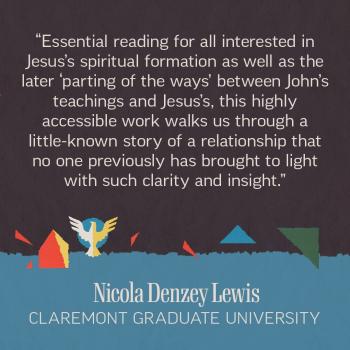T&T Clark kindly sent me a review copy of Maurice Casey’s monumental opus Jesus of Nazareth: An Independent Historian’s Account of his Life and Teaching
.Since Casey’s more recent book focused on mythicism builds heavily on the treatment of the details of the life of Jesus in this earlie volume from 2010, i thought I had better finish reading it and start blogging about it (even if not in that order).
The reason for taking so long is that Casey’s book goes into such extensive detail, interacting with important Jewish sources as well as the New Testament, and is not the sort of book it makes sense to skim. It is a book to be chewed and savored.
Casey’s description of himself as “independent” refers to the fact that he is not religious, but neither anti-religious. This is extremely important. Often you will find that those of us who have a background in some sort of conservative Christianity tend to be extremely skeptical, to prefer later dates to early ones, as we react against the errors of our previous assumptions and dogmas. Casey is able at times to make a case because of his lack of apologetic interests one way or the other that simply asks balanced historical questions, with no particular reason to either prefer or avoid an early date or a late one.
Casey notes the impact that antisemitism had on 20th century German scholarship on in the quest for the historical Jesus. Not only figures like Fiebig, but also Rudolph Bultmann, in his German context, were shaped by this. Casey writes (p.11): “The effect of their radical criticism was to ensure that out from under the Synoptic Gospels there could never crawl a Jewish man. If moreover we can become convinced that we do not ow anything much about the Jesus of history, the Christ of faith can continue unhindered.” Ironically, many modern atheists, including the mythicists among them, are unaware of not only the antisemitic roots but the overwhelmingly Christian concerns that motivated this excessive and unwarranted skepticism. Casey directly tackles the mythicism of Robert Price and Frank Zindler, before proceeding to mainstream work by scholars like Wright, Dunn, Meier, Chilton, Sanders, Vermes, and others.
Chapter 2 is devoted to reliable sources. Casey is of the view that the Gospel of Mark reflects in places the linguistic interference known to all who are at least bilingual. The significance of evidence for Aramaic material underlying Mark is surely overstated when Casey writes that “our oldest source is sometimes perfectly accurate…only one short step away from eyewitness testimony” (p.64). But it does mean at the very least that the Galilean Jesus of the Greek Gospels derives from Aramaic stories rooted in that region. And so the attempt of some mythicists to drive a wedge between Paul and the Gospels, with the latter as simply attempts to build on or at times undermine and transform the former, simply will not work. That may seem plausible to ideologically-driven laypeople outside of this scholarly field, but it cannot to those being attentive to what the sources actually say, and the clear evidence they provide regarding the linguistic, cultural, and religious setting that shaped them. And so, even if one may find Casey to be overstating the case, it is unambiguously clear from the evidence that he is closer to the truth of the matter than the mythicists are.
Casey looks at the evidence from Justin Martyr regarding the Gospel of Mark, noting that Justin mentions the word Boanerges as appearing in the “Memoirs of Peter” (Dial. 106). Since that word is an inaccurate transliteration of bene re’em into Greek letters, and “The possibility that two independent sources made almostidentical mistakes in the transliteration of these words is negligible” it thus is clear that Justin was indeed rferring to our Gospel of Mark (p.66). Casey then goes on to show why the deduction of early church fathers regarding the identity of this Mark ought to be viewed as mistaken, and that the inaccurate prediction regarding the temple which is attributed to Jesus means the work is earlier than 70 CE. Casey deduces from the state of the Gospel of Mark that it was probably a first draft, rather than a spfinished work intended for publication in its present form (pp.76-77). That it was written early and circulated widely, perhaps after its author died or was imprisoned, must be concluded to make sense of how a work in this unpolished state achieved canonical status even despite the production of works like the Gospel of Matthew.
In turning to the Q material, Casey here too finds Aramaic considerations crucial. The difference between Matt. 23:23-24 and Luke 11:42 over whether dill or rue was to be tithed reflects the difference of a single letter between two Aramaic words, and in the case of Luke, resulted in a plant that was not eaten becoming part of the statement (pp.82-83). Since Mark, however unpolished, was faithfully preserved and circulated, Casey deduces that the Q material must have been a much more “chaotic” collection of scraps and notes in Aramaic and in Greek, and not a gospel – much less one belonging to a “Q community (p.85). Luke too had access to one or more Aramaic sources, apparently not available to Mark or Matthew or Q, and he shows himself to be an excellent historian by ancient standards. We should not, therefore, dismiss something on the grounds that it only appears on Luke.
As you can hopefully see from this very brief summary of the first two chapters of Casey’s book, this is a work that looks carefully at evidence and has no qualms about questioning either ancient sources or modern assumptions and conclusions. The review will continue in a future post.













